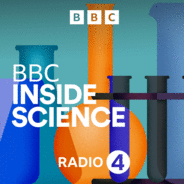For the past 220 years, Ordnance Survey have been mapping Great Britain with extraordinary accuracy. But as Gareth discovers when he visits their HQ in Southampton, GB's master map is not a static printed document. It's a 2 petabyte database which is updated up to 20,000 times a day. This adds up to 360 million updates a year. Since the development of the theodolite and the first detailed map in 1801 of the county of Kent, Ordnance Survey have used cutting edge technology, not only to map our lands, but to manipulate, understand and ask questions of the geography of our natural landscapes and built environment.Voices on the train, public address announcements at the station, automated telephone banking, Alexa and Siri. We are surrounded by electronic voices. But very little research has been done of how we respond to synthetic speech. To investigate the impact of artificially generated voices in our lives, BBC R&D together with our favourite acoustic engineer, Professor Trevor Cox of the University of Salford, has just launched a study. The Synthetic Voices and Personality Test, is an online test we want you to take part in. Please go to https://voicestudy.api.bbc.co.uk and have a listenPresenter Gareth Mitchell
Producer - Fiona Roberts

Wissenschaft & Technik
BBC Inside Science Folgen
A weekly programme that illuminates the mysteries and challenges the controversies behind the science that's changing our world.
Folgen von BBC Inside Science
571 Folgen
-
Folge vom 13.02.2020Ordnance Survey - Britain's 220-year-old tech company; Launching synthetic voices and personality test
-
Folge vom 06.02.2020Solar Orbiter launch; Mutational signatures in cancer; paleo-oncologyThe latest space mission to the Sun is due to launch on Sunday. SolO, the European Space Agency's Solar Orbiter, will loop around our star in an elliptical orbit, sling-shotting around Venus. Professor Richard Harrison at the Rutherford Appleton Laboratory has been on the mission from its conception, he details the instruments and what they're hoping to discover about the Sun and its impact on space weather back here on Earth. If chemicals in cigarette smoke or exposure to UV light played a role in causing a cancerous tumour, we can now see this evidence in the DNA. These and other causes of cancer are being catalogued by a huge international study revealing the genetic fingerprints of DNA-damaging processes that drive cancer development. Professor Mike Stratton, is director of the Wellcome Sanger Institute and author of one of many papers released in Nature and associated journals this week that detail the results of the Pan-Cancer of Whole Genomes Consortium.Cancer is not a modern disease. Evidence in bones and remains reveal our ancient ancestors also suffered. Dr. Kate Hunt is a paleo-pathologist studying paleo-oncology, a very specific, very recent branch of archaeology, looking through ancient burial sites, artefacts and literature for signs of cancer.Presenter - Marnie Chesterton Producer - Fiona Roberts
-
Folge vom 30.01.2020Coronavirus update, Typhoid Mary and 200th anniversary of the first sighting of AntarcticaWith the recent coronavirus outbreak spreading around the world, and concerns about people being infectious before they exhibit any symptoms. Professor of Virology at Nottingham University Jonathan Ball explains infection rates, quarantines and why he's worried about it spreading to the developing world.'Alice in Typhoidland' is a new exhibition in Oxford recording how that city dealt with typhoid. It’s called that after one of its 19th century residents, Alice Liddell (the girl after whom Alice in Wonderland was named). Her father Henry Liddell was the Dean of Christchurch College and together with his friend Henry Ackland was instrumental in closing off Oxford's open sewers and thereby combating some of the causes of the disease. The exhibition also explores the fate of Typhoid Mary – one of the most famous asymptomatic disease carriers in history.Exactly 200 years ago, 30th January 1820, at 3:30 local time, the continent of Antarctica was spotted for the first time by a British expedition captained by Edward Bransfield, on the Merchant Ship The Williams. But they weren’t the very first: 3 days earlier - on 27 January - a Russian expedition led by Fabian Gottlieb von Bellingshausen and Mikhail Lazarev spotted what is now known as the Fimbul Ice Shelf. The UK Antarctic Heritage Trust is spearheading celebrations. Camilla Nichol is its CEO and she describes the history of the icy continent and how it's become the protected scientific reserve it is now. Producer - Fiona Roberts
-
Folge vom 23.01.2020Coronavirus outbreak in China; Genetic diseases in Amish communities and getting an Egyptian mummy to speakWith news reports moving as quickly as the virus may be spreading, the latest coronavirus outbreak which is thought to have started in Wuhan in central China is fast becoming a global health concern. Adam Rutherford speaks to BBC Inside Science's resident virologist Professor Jonathan Ball from Nottingham University, who says one of the most urgent things to do is to find out where the virus came from, and what animal it jumped to humans from.The Anabaptist Amish communities are some of the fastest growing populations on the planet. They came to the US from the Swiss-German border in the 18th and 19th centuries and have maintained their plain, simple community-minded way of life. Partly because they all descended from the same geographical area and partly because they tend to marry within their own communities, they can suffer from a particular spectrum of genetic disorders. Professor Andrew Crosby and Dr. Emma Baple from Exeter University have been studying these diseases, including a number new to medicine, and in return they are helping the Amish to understand and treat some of these debilitating diseases.He may currently sound more like a sheep baa-ing, but in a proof of concept experiment, Professor David Howard, an electrical engineer at Royal Holloway University of London, has been able to scan, 3D print and electronically reanimate the vocal tract of Nesyamum, a 3000 year old Egyptian mummy. The eventual hope is to recreate his tongue and try to get him to sing.Producer - Fiona Roberts
